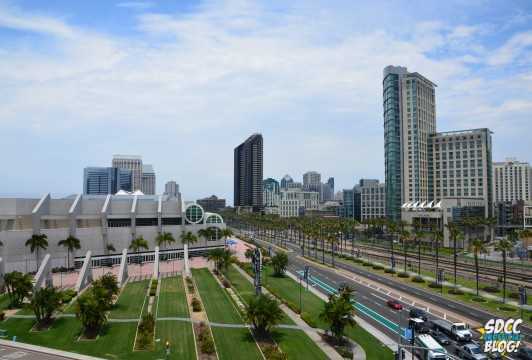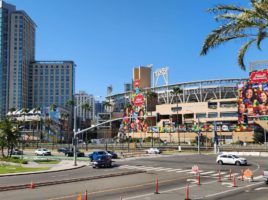
Today, the San Diego Workforce Partnership released their findings on a recent study at the impact that San Diego Comic-Con has on San Diego’s workforce, and in part, tourism economy. Although the study notes that “it is not possible to capture data on all jobs created specifically for Comic-Con, it is possible to review Comic-Con’s impact on the San Diego Convention Center workforce”.
The SDWP found that “Comic-Con has a significant economic impact on the San Diego regional economy”, with estimates suggesting that the convention brings in somewhere between $160-$180 million each year, employing 100% of the San Diego Convention Center’s 500-member staff as well as other temporary positions to meet the demand of the convention.
However, those numbers might be a very low estimate, as the study only mentions that SDCC brings in over 100,000 attendees (when Comic-Con International says that it’s attendance tops over 130,000 attendees, and that’s not counting non-badged attendees who still flock to the city). It also states that SDCC runs for four days, omitting Preview Night completely from their numbers.
The study goes on to mention that the economic impact extends far beyond the walls of the actual convention, with local businesses and organizations also hiring additional staff for the event, but that “there is no clearinghouse to track these hires so” exact numbers and impact aren’t known.
With SDCC’s current contract with the San Diego Convention Center only set through 2016, and recent setbacks in the proposed expansion plan, findings like this one are important for helping to prove to local city officials and to San Diego at large that Comic-Con is worth fighting for.
You can read the entire study on the San Diego Workforce Partnership’s website.
[UPDATE] Comic-Con International has issued their own press release on the finding, noting that it’s possible some of the factors used to calculate the figure also didn’t take into account ancillary spending by locals, out-of-town visitors and corporations, and companies that buy advertising on buildings, lamp posts, restaurant buyouts and activations of local park space and private venues” – meaning that the estimates for revenue that San Diego Comic-Con brings into the city of San Diego could be even higher.
Also not measured is the economic benefit that San Diego gets from media attention both leading up to and during the convention.
In the press release, David Glanzer, Director of Marketing and Public Relations for Comic-Con said, “We never dreamed that our local annual convention would evolve over its forty-plus years into the worldwide celebration that it is today.”
Here’s the complete press release:
SAN DIEGO, Nov. 5, 2014 /PRNewswire-USNewswire/ — San Diego Workforce Partnership (SDWP), which serves as a vital source of information on the San Diego region’s labor market, has recently published an article reviewing Comic-Con’s impact on San Diego’s workforce and the San Diego Convention Center’s staffing in particular. Comic-Con, held annually in San Diego and organized by a nonprofit educational organization, is a convention celebrating the historic and ongoing contribution of comics to art and culture.
SDWP’s article calls attention to the estimated $320,000 in wages Comic-Con brings to the Convention Center’s 500-member staff. In addition to those staffers, the Convention Center hires temporary employees and posts job listings prior to Comic-Con to cover needs that the regular staff cannot. These positions include engineers, laborers, electricians, and International Alliance of Theatrical Stage Employees (IATSE) union workers, to name a few.
According to the San Diego Convention Center Corporation, Comic-Con’s 2014 show has been projected to have an impact of almost $178 million on the local economy. The actual economic impact may be larger as it has since been speculated that the factors used to calculate the figure did not take into account ancillary spending by locals, out-of-town visitors and corporations, and companies that buy advertising on buildings, lamp posts, restaurant buyouts and activations of local park space and private venues.
“Year after year, it is not lost on me the amazing number of talented people it takes to make this show happen,” said David Glanzer, spokesperson and director of marketing and public relations for Comic-Con. “In addition to Comic-Con’s thousands of invaluable volunteers and staff, local businesses and organizations hire additional workers who make sure the event and the city are represented in the best possible light. It really is a terrific collaborative effort.”
What is not measured in the workforce study is the economic benefit of worldwide media attention focused on America’s Finest City during the four days of the convention and throughout the year. “We never dreamed that our local annual convention would evolve over its forty-plus years into the worldwide celebration that it is today,” said Glanzer.



